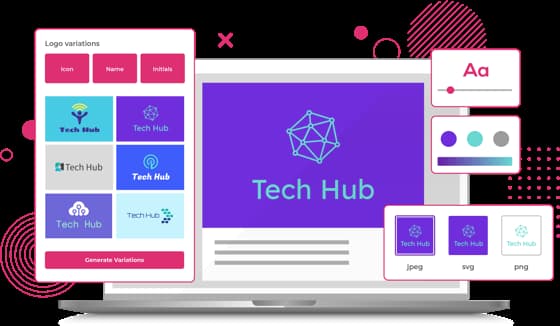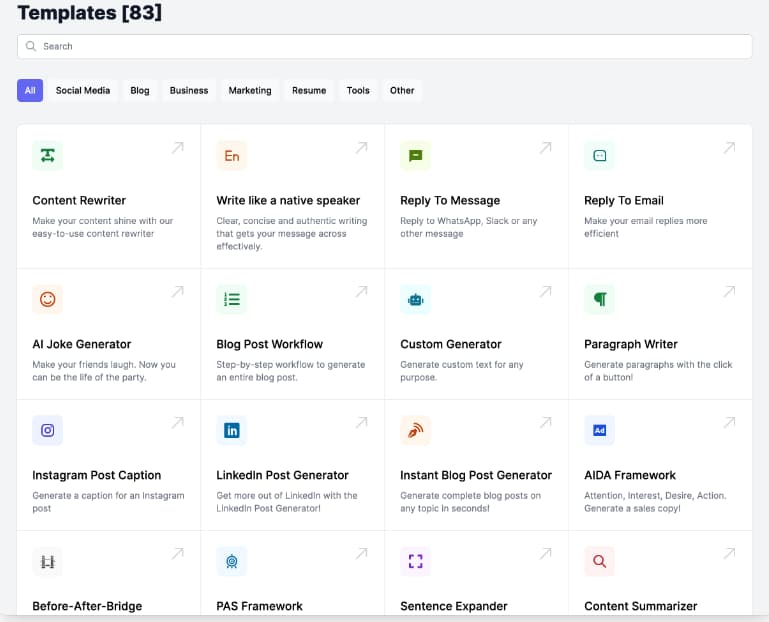When ChatGPT came on the scene last year, it changed the entire artificial intelligence industry. This generative AI tool produces answers to almost any question it’s asked.

And it’s already considered one of the best chatbots ever created.
Generative AI is the newest form of artificial intelligence that’s making headlines. While the technology isn’t new, AI can now create authentic content that’s usable in marketing.
In this post, we’ll review what generative AI is, its benefits, limitations, use cases, and tools to add to your marketing stack.
Benefits of Using Generative AI
Limitations of Using Generative AI
What is generative AI?
Generative AI is artificial intelligence that can generate content including text, images, audio, video, code, and synthetic data. It works by learning patterns from existing data and using that knowledge to create new content. Rapid advancements have left us with AI that can write engaging text and create realistic images.
How does it work? Generative AI starts with a prompt. Write instructions for what you’d like the AI to create. Then, you can customize the results with feedback on style or tone.
Benefits of Using Generative AI
With proper usage, AI can yield amazing results. We’ll discuss the benefits of using AI below.
1. Generative AI can create marketing content.
Generative AI can help create content, including blogs, images, emails for a lead nurturing sequence, and more. This will reduce the amount of time marketers spend creating.
Ultimately, it will simplify their process so they can spend more time strategizing.
These tools can also help marketers summarize complex information and create images for their marketing assets.
If you’re wary about having AI generate all of your work, tools like HubSpot’s content assistant can assist more broadly in the content creation process.
The content assistant can generate outlines for your posts or offer suggestions when you face writer’s block.
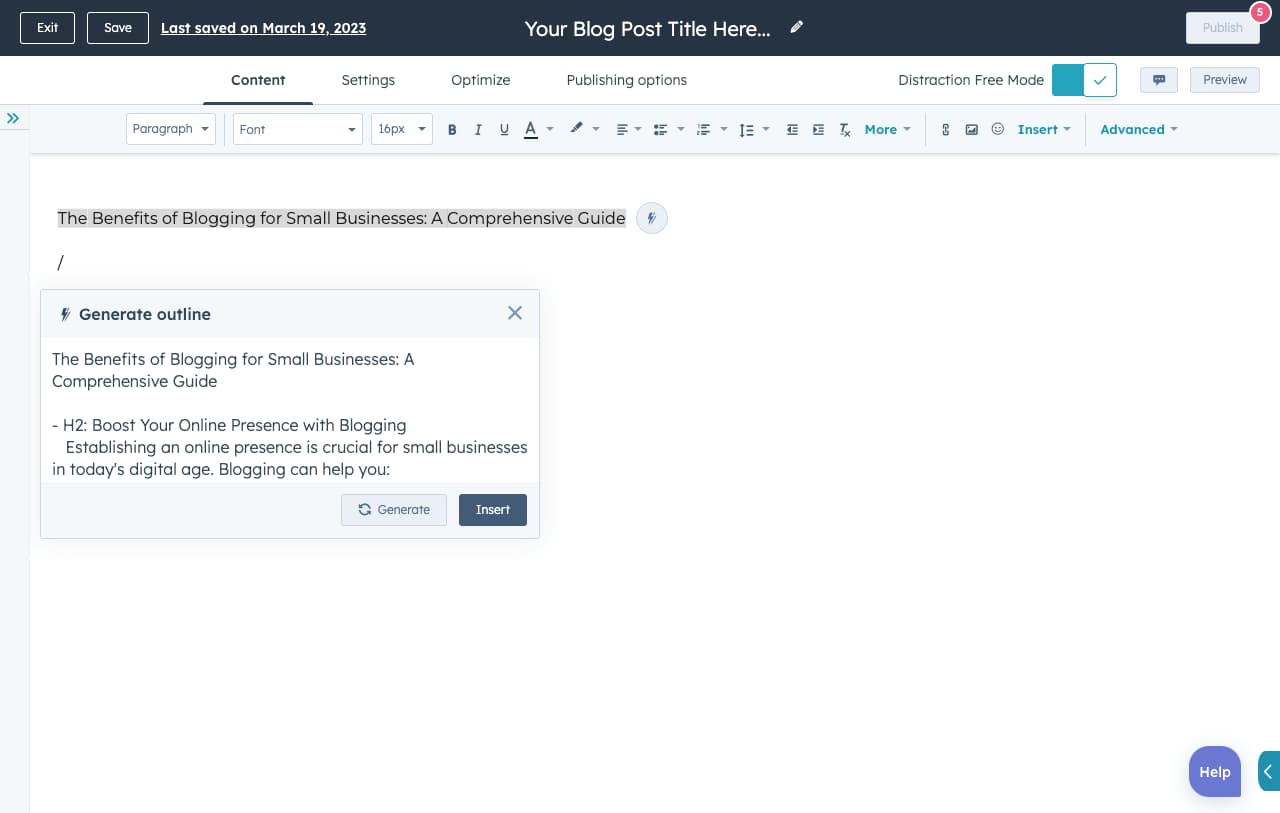 Start using content assistant today.
Start using content assistant today.
2. Generative AI can assist sales reps.
Generative can reduce the amount of effort a sales rep has to put into responding to client emails by writing the emails for them.
You can even specify the tone of your message. Perhaps you’d like something formal for new prospects and informal for long-held contacts. AI can help you appeal to both audiences.
3. Generative AI can improve responses to queries.
Distilling information is made much easier with generative AI. Many tools write responses to general queries. You can then quickly deliver complex information in an easier-to-understand way.
This can be especially useful for your service team. Let’s say it’s after hours, and your support staff has already clocked out. Generative AI can help answer simple questions that aren’t already pre-loaded in your chatbot.
Limitations of Using Generative AI
While generative AI is an interesting tactic for marketers to consider, you’ll want to keep these factors top of mind:
- Accuracy of results. Results should be reviewed to see whether the information is accurate and what source was used to create the content.
- Cybersecurity. New technology opens the door to new and unknown threats from bad actors. Avoid putting sensitive data or information directly into AI channels.
Beyond that, there are three major AI limitations that your marketing should know.
1. Copyright Infringement
Generative AI uses data (meaning other content) to help inform its output. These tools can promote plagiarism by ignoring the original content’s creators. You won’t find proper backlinking and sourcing in this content.
Plagiarism damages trust in your brand. And, you may also face copyright claims. Without proper attribution, you may infringe upon someone else’s work.
2. Quality.
Generative AI requires a lot of data to produce authentic, quality content. Human editors are still needed to review AI-generated content before publication.
Additionally, even if the content is high-quality, generative AI makes it harder to identify accurate or inaccurate information.
You’ll want fact-checkers to ensure all of the information from AI is true. Plus, it’s easier to create deep fakes (here’s photographic evidence).
3. Content Bias
The content generative AI produces may use biased original sources. That means the output may have a certain lean, even if that’s not your intention.
Without knowing where the information comes from, you’ll have a harder time assessing bias or accuracy in a piece of writing.
When to Use Generative AI
1. Creating Marketing Content
Generative AI can create marketing content, including text, images, videos, and audio. If you ever get stuck finding the right words, AI can become a handy assistant.
For example, AI can create a blog post, a photo caption, an email, social media copy, or product descriptions. Plus, it can help create photorealistic art and graphics to include in your marketing campaigns.
You’ll want to make sure a member of your team reviews the content made by AI. This human editor can make sure the output matches your brand’s voice. They should also check for factual clarity and bias.
2. Customer Service and Technical Support Chatbots
This type of artificial intelligence can be used for customer support chatbots, whether that’s on your website or via SMS text support.
This can speed up response time to customer inquiries and free up reps to address more complex issues.
3. Writing Email Responses
Sales reps can also benefit from using generative AI to write email responses. If your reps are tired of writing messages in bulk, generative AI can create custom messages with specific tones — all in seconds.
Further, AI can help pull data from your CRM to ensure personalized messaging. If you’re looking to get started, dive into ChatSpot.
This AI bot uses chat-based commands to interact with your CRM data, so you know the full history of any client you contact.
4. Product demonstrations.
Generative AI can be particularly useful for product demonstrations as well. For example, if you want to create a demo video, you can use generative AI tools to make it for you.
AI can also make suggestions to help you improve the user experience. You can have AI write you a script or answer any questions you have during the post-production process.
Generative AI Tools
Now we know about generative AI and how to use it in marketing, but what specific tools can you use? Let’s dive in below.
1. Content Assistant From HubSpot
Content assistant tools from HubSpot can help you craft copy of any length in seconds. You can easily switch between manual and AI content creation to write posts, landing pages, marketing emails, and more.
Content assistant can help you throughout the writing process. The tool can generate ideas for blog posts and create an outline to help guide you.
Price: Free
Best for: Marketers and copywriters
What we love: Content assistant can help you optimize your text for SEO.
2. ChatSpot
ChatSpot is a conversational CRM bot that you can connect to HubSpot. With chat-based commands, you can interact with your CRM data. You can also send emails or pull insights by entering a text prompt.
ChatSpot also has the ability to write long-form content. You can use this tool to generate drafts for your blog.
Price: Free
Best for: Marketers and sales teams
What we love: ChatSpot can help you research the topics you’ll cover in your blog posts.
3. Writesonic
Writesonic is one of the best generative AI tools for creating any type of creative copy. This tool can help you create SEO-optimized content for your blogs, ads, emails, and website 10 times faster.
Start by inputting the topic you’d like to cover and the language you’re writing in. From there, Writesonic can generate ideas for your post in the form of suggested titles. Then, you can prompt AI to write you an intro, an outline, or the full article.
Price: Plans start at $12.67 per month annually. Custom plans are available.
Best for: Marketers and agencies
What we like: Writesonic offers integrations with WordPress, Zapier, and SEMrush.
4. Jasper
If your team is looking for an AI solution, consider Jasper. This generative AI offers a wide range of services that can benefit multiple members of your team.
Jasper can help craft emails, social messaging, and blog posts. You can even prompt the AI to make art.
Let’s say you want to write a blog post. Just open a new document in Jasper’s interface. You can input the topic, a content brief, your desired tone, and relevant keywords. Text appears once you press generate.
If you keep clicking “generate,” AI will base additional text on what’s already been written in the document.
Jasper uses a similar process when generating art. You can describe your ideal image, the style of the piece, and the artistic medium. From there, AI does the rest.
Price: A starter plan costs $40 per month annually. Boss Mode plans cost $82 per month annually. Custom pricing is available for businesses.
Best for: Teams
What we like: Jasper integrates with Chrome and emphasizes collaborating with team members in real time.
5. Synthesia
Synthesia is one of the best options for AI-driven video content. The platform uses AI to create realistic AI avatars with voiceover capabilities. You can customize your avatars’ appearances, voices, and languages.
Then, all you need to do is upload your script.
Soon, you’ll have a life-like video without hours spent on production. With, Synthesia you can easily create both training and product marketing videos.
Price: Personal plans start at $30 per month annually. Enterprise pricing is available upon request.
Best for: Marketing teams producing video content
What we like: The platform comes with a free media library, and you can upload your media brand guidelines.
6. Bardeen
If you’re looking to automate away time-intensive tasks, Bardeen is here to help. This AI-powered tool integrates with your email, calendars, messaging, apps, and more so you can work more efficiently.
Users can ask Bardeen to automate email scheduling, manage tasks, or make smart recommendations for text.
Bardeen is also an excellent option for analyzing data from a variety of sites. Its scraper lets you extract website data directly into web apps and sheets.
Price: Free plans are available. Professional plans start at $10 a month.
Best for: Recruiters, sales, and marketing teams
What we like: Bardeen allows AI to automate manual workflows to increase productivity.
7. Copy.ai
If you have writer’s block or are just tired of rephrasing the same message for different tweets, Copy.ai can help. This platform can help you write long-form content and social media messages optimized for different platforms.
Start by specifying the platform you’re writing for. Then, give the AI context for your post. That could be a topic and keyword or, for social media, a section of a report. Then, Copy.ai can generate text.
If you’re creating social copy, Copy.ai will generate multiple options for you to use. You can choose which works best or schedule them all.
Price: Plans start at $36 per month annually.
Best for: Teams, bloggers
What We Like: Copy.ai is a great option for those that are just getting started with artificial intelligence. It can help you write blog posts, high-converting social media posts, and engaging emails.
8. ChatGPT
ChatGPT is a conversational artificial intelligence that can help with a variety of tasks. You can use ChatGPT to compose emails and create any type of marketing copy.
Just type a command into the platform’s interface, and you’ll get a response. You can ask ChatGPT to help you research different topics, create new copy, or paraphrase existing work.
Price: ChatGPT is currently free. Plus plans start at $20 per month.
Best for: Individual bloggers
What we like: ChatGPT is the first generative AI that’s seen high levels of success and adoption. This means it has a large dataset to learn from.
9. Rephrase.AI
Rephrase.AI is another generative AI platform that focuses on providing personalized videos for your marketing needs. This tool can convert plain text, such as your blogs, into professional-quality videos in minutes.
The company emphasizes repurposing old content to improve the customer journey and your marketing campaigns.
Price: Personal plans start at $25 per month. Enterprise pricing is available upon request.
Best for: Teams creating videos
What we like: Not only does Rephrase.ai help make the videos, the tool can help you track and analyze the performance of your campaign.
10. Soundraw
Soundraw is highly accessible and can quickly create high-quality music for a variety of marketing applications. You can use this tool to create a theme song for your company’s podcast or background music for an explainer video.
Price: Free; Personal, $16.99/month annually
Best for: Content and video creators, podcasters, streamers
What we like: Maybe you don’t know exactly what you want your song to sound like, but you have a general idea of the video’s atmosphere. Soundraw allows you to sort by mood.
11. Designs.ai
Designs.ai is a generative AI platform that allows users to create, edit, and scale content. You can create logos, videos, voiceovers, visual designs, and marketing copy.
Our favorite element of this software is the ability to collaborate and share projects across teams.
Price: Basic plans cost $19 per month annually. Pro plans cost $49 per month annually. Enterprise pricing is available upon request.
Best for: Brand owners and teams
What we like: Designs.ai can make stunning visuals. However, it also has a text-to-speech feature that allows you to convert scripts to audio.
12. Easy Peasy AI Chat
Easy Peasy AI Chat has templates for any type of marketing copy you need to create. It can also help you create images, podcast notes, and social media posts.
Price: Free; Basic, $4.99/month annually; Starter, $8/month annually; Pro, $18/month annually
Best for: Teams
What we like: We love the “write like a native speaker” option. This can keep your brand conversational no matter where in the world you operate.
Using Generative AI
Generative AI may be new on the scene, but it’s not going anywhere anytime soon. While it can be particularly useful for marketing teams, it’s important to be aware of the limitations of the technology.
Find the tools to help your marketing team save time and optimize resources to make the most of how AI can improve your productivity.

![Free Guide: How to Use AI in Content Marketing [Download Now]](https://no-cache.hubspot.com/cta/default/53/3e25e192-30c3-40c1-a7da-a4d054c9e157.png)
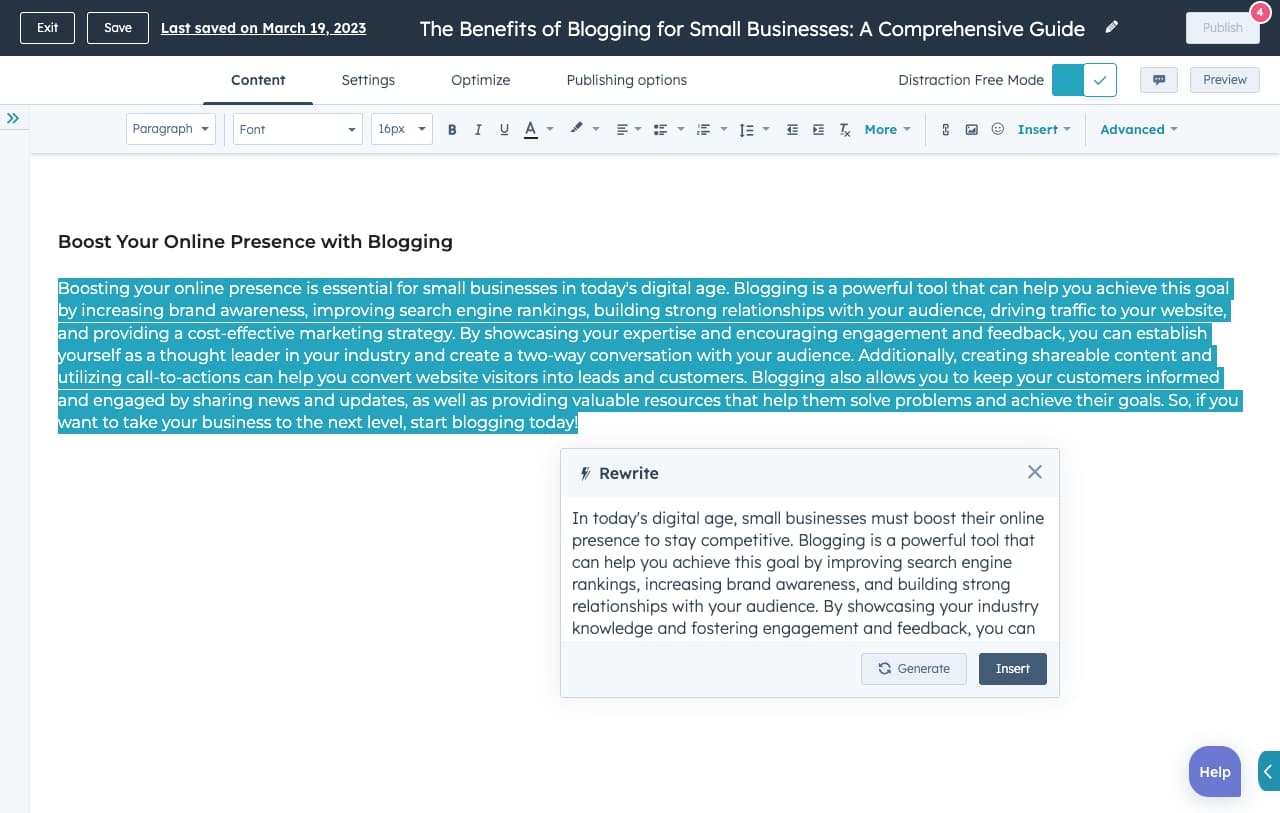
.jpg?width=1468&height=1360&name=generative-ai-chatspot%20(1).jpg)
.jpg?width=800&height=587&name=generative-ai-writesonic%20(1).jpg)
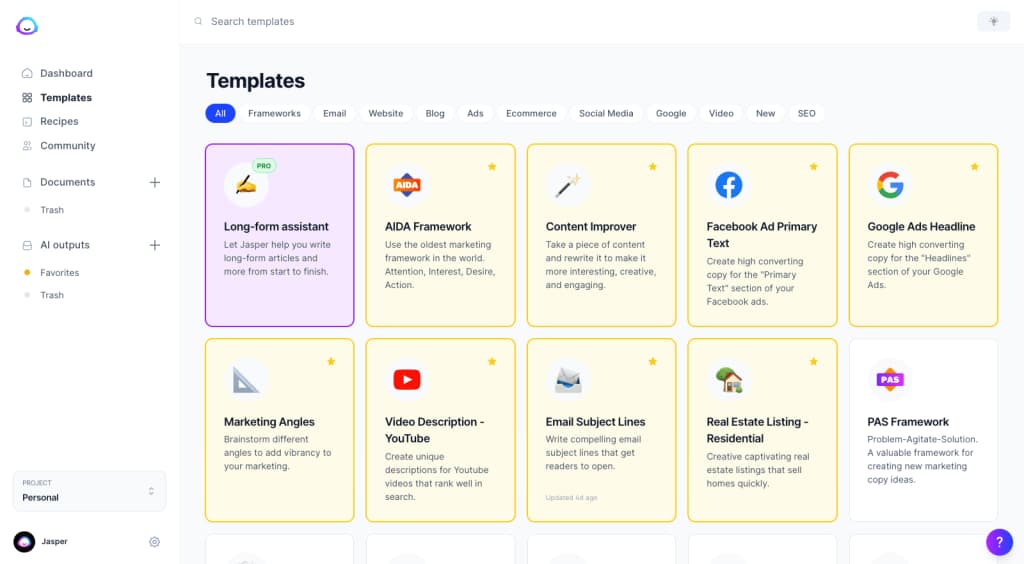
.jpg?width=740&height=459&name=generative-ai-Synthesia%20(1).jpg)
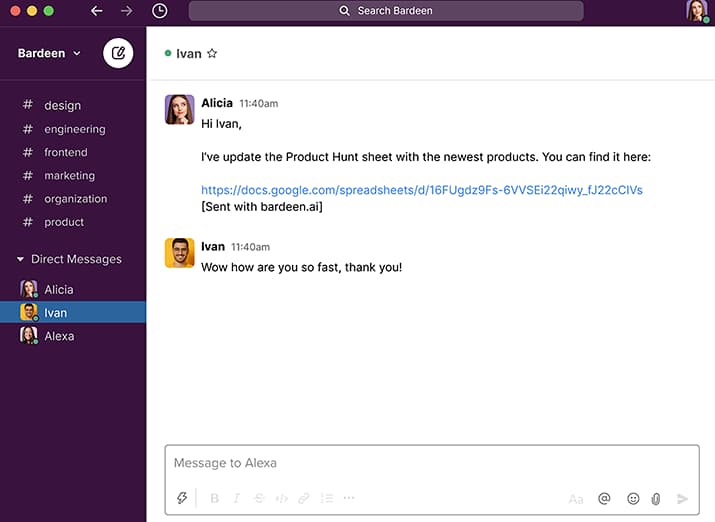
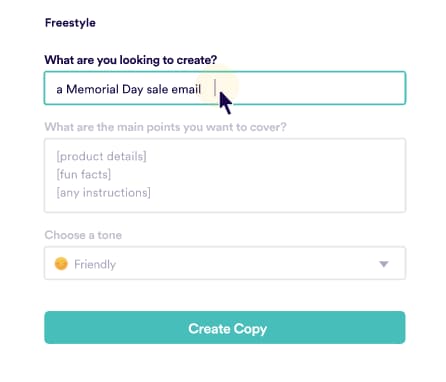
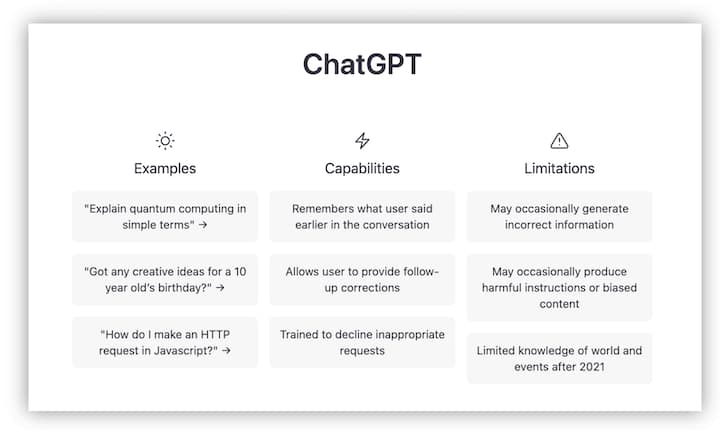
.jpg?width=913&height=456&name=generative-ai-rephrase%20(1).jpg)
%20(1).jpg?width=1600&height=777&name=generative-ai-Soundraw%20(1)%20(1).jpg)
